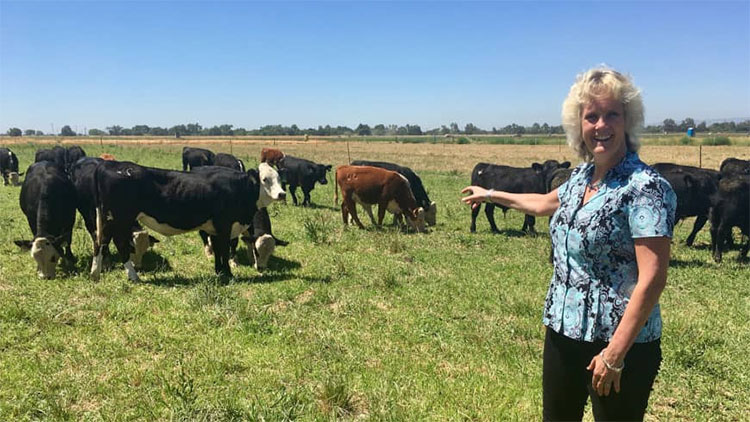Is genetically modified beef easy to eat?
Editing genes for animals and plants has come to life in some ways but controversies continue.
"Now, at this very moment, it's so exciting," exclaimed animal genetic researcher Alison Van Eenennaam when the ultrasound of three cows was transplanted with genetic modification for more than a month. This is one of the most exciting projects currently among controversies about genetic modification.
Previously, scientists around the world have modified many species genes to create virus-resistant pigs, heat-resistant cattle to "muscular" sheep . About 300 genetically modified pigs, cows, sheep and goats have been born.
There are no technological barriers
The study by Van Eenennaam and his colleagues is being carried out at the Beef Barn, of the University of California's agricultural facility. Genetically engineered calves expected to be born next summer are expected to grow muscle like bulls. The Beef Barn facility also created a number of non-horned cows.
According to the Washington Post, US scientists are promoting techniques similar to the concussion study of Chinese scientist Xia Jianhui - who has just announced that he created two children who modified genes last month. However, they only work with animals in a way that seeks to develop the advantages of animals.

Researcher Alison Van Eenennaam with hornless cows was created by scientists at the University of California (USA) - (Photo: FoxNews).
But studies on genetic modification will not stop there but are forecast to be even more daring."Now there are no technology challenges to create genetically modified animals. What we need to do is start producing animals," said biologist Charles Long of Texas A&M University.
Previously, for decades, scientists only conducted small genetic changes such as helping animals fight disease.
For farms that want to maximize productivity, this may be the perfect solution: cows that are full of males will produce more meat, without horns that reduce costs and risks when cutting horns for cattle. .
But the big question has not been answered yet: Whether the regulations, public concerns and safety issues will make forever modified animal animals just interesting products of the laboratory or will change both agriculture and food?
The group of American scientists like Van Eenennaam still cannot answer the future of genetically modified animals and whether they are "edible".
Are people ready to eat?
But contrary to the excitement in the scientific world, activists and the public are still debating about animal gene editing.
"Genetic editing is really taking off and now is the time for us to have a public discussion of how we want and don't want to use it" - quoted Washington Post expert Jennifer Kuzma. North Carolina State University.
"All surveys show that people are more comfortable with crops than biotech animals. The normative system cannot be 100% scientific and scientific."
In the United States, industry insiders assess government moves next year will be crucial to bringing food from animals to the market. Until now, Washington's regulations still put the modified gene into the animal drug category, making it difficult to create genetically modified animals.
The only food from genetically modified animals allowed to be sold in the United States is a fast-growing salmon, but has not been sold until now because of some problems.
Specifically, details of the biotech crop and animal development action plan of the US Food and Drug Administration are expected to be published next year that will clarify the approach, reducing barriers to with research but will also protect people's health.
"Some people call me and say: I want to edit the gene and put it in the food chain. So what should I do? I tell them I don't know how long it will take and what to pay, because we don't have any for example " - University of Missouri researcher Randall Prather explains the current situation.
- Genetically modified plants still cause doubts
- Genetically modified food in Vietnam ever since?
- Genetically modified salmon in the US is controversial
- Things you should know about GMO genetically modified foods
- Genetically modified insects threaten genetically modified plants
- Using genetically modified foods is prone to cancer
- He called on the EU to approve genetically modified corn by voting
- Legislation of genetically modified corn harmful
- Countering genetically modified corn causes cancer in mice
- Raising awareness about genetically modified organisms
- Genetically modified plants and the future in Vietnam
- DNA from genetically modified food goes straight into the human body
 13 causes of non-itchy rash
13 causes of non-itchy rash How the mouse with human ears changed the world?
How the mouse with human ears changed the world? The truth about 'fried rice syndrome!
The truth about 'fried rice syndrome! What is dental implant?
What is dental implant?